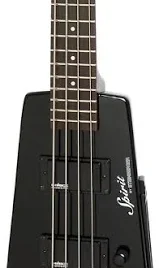How to Set Up Your Bass Guitar Playability
Understanding the Basics
Bass Guitar Playability requires finding the perfect balance between string action, neck relief, intonation, and pickup height. These elements work together to create an instrument that’s comfortable to play, stays in tune, and sounds great across the entire fretboard.
The Tools of the Trade
Before we dive in, let’s make sure you’ve got all the necessary tools:
- Allen wrenches (hex keys)
- Screwdrivers (both flathead and Phillips)
- Feeler gauges
- String action gauge
- Accurate tuner
- Capo (optional, but helpful)
Having these on hand will make the setup process much smoother. Trust me, I’ve learned the hard way that trying to eyeball measurements or use makeshift tools just leads to frustration!
Step-by-Step Setup Guide
1. Adjusting the Truss Rod
The truss rod is your hidden weapon for achieving the perfect neck relief. Here’s how to dial it in:
- Place a capo on the first fret.
- Press down on the last fret of your lowest string.
- Check the gap between the string and the 8th fret.
- Aim for a gap of about 0.010″ (0.25mm).
If you need to adjust the truss rod, remember: righty-tighty increases relief, lefty-loosey decreases it. Make small adjustments and recheck often.
It’s a delicate process, so take your time!
Truss Rod Adjustment Tips
- Always use the correct size Allen wrench to avoid stripping the truss rod nut.
- If you encounter significant resistance, stop and consult a professional.
- Allow the neck to settle for a few hours after making adjustments before fine-tuning.
2. Setting the String Action
Now that your neck is straight (or has just the right amount of relief), it’s time to set the string height:
- Measure the string height at the 12th fret.
- Adjust the bridge saddles to achieve your desired height.
- A good starting point is 2.5mm for the low E and 2mm for the G string.
Pro Tip: Lower action makes for easier playing, but too low can cause fret buzz. Find the sweet spot that works for your playing style.
Fine-Tuning String Action
- Adjust each string individually for optimal playability.
- Consider your playing style – slap bassists might prefer slightly higher action.
- Check for buzzing at various points along the neck and adjust accordingly.
3. Dialing in the Intonation
Proper intonation ensures your bass plays in tune across the entire fretboard:
- Tune each string to pitch.
- Compare the pitch of the open string to the 12th fret harmonic.
- Adjust the saddle position until both pitches match perfectly.
This step needs patience, but it’s crucial for a great-sounding instrument. Take breaks if you need to – your ears will thank you!
Intonation Troubleshooting
- Use a high-quality tuner for accurate readings.
- Check intonation at many points along the neck, not just the 12th fret.
- Be aware that old strings can affect intonation accuracy.
4. Setting Pickup Height
The distance between your pickups and strings affects both tone and output:
- Press each string at the last fret.
- Adjust pickup height to achieve a distance of about 2-3mm between the string and pickup.
Closer pickups generally mean more output, but they can also affect sustain and even cause magnetic pull on your strings if too close.
Pickup Height Considerations
- Experiment with different heights to find your ideal tone.
- Be aware that extremely low pickup heights can cause interference with string vibration.
- Consider balancing the output between many pickups if your bass has them.
Fine-Tuning and Personalization
After making these adjustments, spend some time playing your bass thoroughly. Pay attention to how it feels and sounds.
Don’t be afraid to make minor tweaks – setup is a personal preference, and what works for one player might not work for another.
Experimenting with Different Setups
- Try various string gauges to find your preferred tension and tone.
- Explore different bridge and saddle materials for tonal variations.
- Consider upgrading your nut material for improved sustain and tuning stability.
Common problems to Avoid
- Over-tightening the truss rod: This can damage your neck.
Always make small adjustments.
- Setting action too low: While low action feels great, it can cause buzzing if taken to extremes.
- Ignoring temperature and humidity: These factors can affect your setup, so be prepared to make seasonal adjustments.
- Forgetting about string gauge: Changing string gauge often needs a full setup adjustment.
Seasonal Adjustments
- Keep an eye on your bass’s setup as seasons change.
- In humid conditions, you might need to add slight relief to the neck.
- During dry winter months, your bass might benefit from a humidifier in its case.
Adapting Your Setup for Different Styles
Your ideal setup might change depending on your playing style:
- For slap technique, you might prefer slightly higher action to prevent slapping against the frets.
- For fast, technical playing, lower action can make things easier on your fingers.
- If you use a pick, you might want higher action to prevent excessive pick noise.
Experiment with different setups to find what works best for your style!
Style-Specific Setup Tips
Slap Bass
- Aim for slightly higher action, around 3mm on the low E at the 12th fret.
- Consider using roundwound strings for that classic slap tone.
- Adjust pickup height to balance string-to-string volume when slapping.
Fingerstyle
- Lower action (around 2mm on the low E) can make fast runs easier.
- Experiment with flatwound strings for a smoother feel and warmer tone.
- Set pickup height to favor the frequencies you want to emphasize in your playing.
Pick Playing
- Medium action (2.5-3mm) can help prevent excessive pick noise.
- Try using heavier gauge strings for added stability when playing with a pick.
- Adjust pickup height to capture the attack of the pick without overwhelming the tone.
Building on the Basics
Once you’ve mastered the basic setup, you can start exploring more advanced techniques:
Fretboard Radius Matching
Ensuring your string radius matches your fretboard radius can greatly improve playability:
- Use a radius gauge to check your fretboard’s curvature.
- Adjust your bridge saddles to match this radius.
- Fine-tune individual string heights for optimal comfort.
Nut Slot Adjustment
Properly cut nut slots can improve tuning stability and reduce buzzing:
- Check string height at the first fret.
- If too high, carefully file the nut slots using the suitable gauge nut files.
- Be cautious – removing too much material can ruin the nut.
Fret Leveling and Crowning
For the ultimate in playability, consider fret work:
- Use a fret rocker to identify high spots.
- Level frets with a leveling beam and sandpaper.
- Re-crown frets with a crowning file to restore proper shape.
This is advanced work, so if you’re not confident, it’s best to leave it to a professional.
Practice Makes Perfect
Here are some exercises to help you develop your setup skills:
Blindfold Test
Try to feel the difference in string height at various points on the neck:
- Set up your bass to your liking.
- Blindfold yourself and play the bass, focusing on how it feels.
- Have a friend make small adjustments to the setup.
- Try to identify what’s changed based on feel alone.
This exercise will help you develop a keen sense of how small adjustments affect playability.
Intonation Challenge
Practice tuning by ear and comparing open strings to harmonics:
- Tune your bass using only harmonics.
- Play scales and chords, listening carefully for intonation issues.
- Make small saddle adjustments and note how they affect overall intonation.
This will train your ear to recognize subtle intonation problems and how to fix them.
Setup Diary
Keep a log of your preferred measurements for different basses or styles:
- Record truss rod adjustments, string heights, and pickup distances.
- Note how these settings work for different playing styles or genres.
- Use this information to quickly set up your bass for specific gigs or recording sessions.
Advanced Setup Considerations
Understanding Scale Length
Your bass’s scale length affects string tension and tone:
- Longer scale lengths (like 35″) increase string tension and can provide a tighter low end.
- Shorter scales (30-32″) can be easier on the hands and provide a warmer tone.
Adjust your setup approach based on your bass’s scale length for optimal results.
Exploring Alternative Bridge Systems
Different bridge designs can affect your setup process:
- Floating bridges need careful balancing of string tension and bridge angle.
- Through-body stringing can increase sustain but may need different intonation techniques.
- Adjustable-mass bridges allow for fine-tuning of string resonance and sustain.
Familiarize yourself with your specific bridge system for the best results.
Pickup Types and Their Impact on Setup
The type of pickups in your bass can influence your setup choices:
- Active pickups often allow for lower action without loss of output.
- Passive pickups might need slightly higher action to maintain strong signal.
- Split-coil pickups can be more sensitive to height adjustments.
Experiment with pickup height and string action to find the sweet spot for your particular pickup configuration.

Troubleshooting Common Issues
Dealing with Fret Buzz
If you’re experiencing persistent fret buzz:
- Check for uneven frets using a fret rocker.
- Ensure your neck relief is suitable for your playing style.
- Consider slightly raising the action if buzz occurs only on certain frets.
Eliminating Dead Spots
Dead spots can be frustrating. Here’s how to address them:
- Identify the exact fret and string where the dead spot occurs.
- Check for loose frets or neck joint issues.
- Sometimes, adding mass to the headstock (like a string tree) can help.
Fixing Tuning Stability Problems
If your bass won’t stay in tune:
- Check for binding at the nut slots.
- Ensure your tuning machines are tight and functioning properly.
- Examine the bridge for any loose components or burrs that might catch strings.
The Impact of String Choice on Setup
Your choice of strings can significantly affect your setup:
Roundwound vs. Flatwound
- Roundwound strings typically need higher action because of their brighter tone and more pronounced vibration.
- Flatwound strings often allow for lower action and provide a smoother playing experience.
String Gauge Considerations
- Heavier gauges increase tension, which might need truss rod adjustments.
- Lighter gauges can allow for lower action but may increase fret buzz.
Coated vs. Uncoated Strings
- Coated strings can slightly dampen vibration, potentially allowing for lower action.
- Uncoated strings might need slightly higher action to prevent buzz.
Maintaining Your Setup
Regular maintenance keeps your bass playing its best:
- Clean your strings and fretboard after each playing session.
- Check and tighten all hardware periodically.
- Be aware of changes in your bass’s feel or sound that might show a need for setup adjustments.
Seasonal Maintenance Schedule
- Spring/Fall: Perform a full setup check as temperature and humidity change.
- Summer: Watch for expanded wood and loosened truss rods in high heat.
- Winter: Be aware of contracted wood and tightened truss rods in dry conditions.
Recording and Performance Considerations
Your bass setup might need tweaks for different scenarios:
Studio Setup
- Lower action can reduce finger noise for clean recordings.
- Consider using flatwound strings for a more controlled, studio-friendly tone.
Live Performance Setup
- Slightly higher action can prevent fret buzz in high-energy stage performances.
- Brighter strings (like new roundwounds) can help your bass cut through the mix.
The Role of Proper Setup in Bass Tone
A well-set-up bass contributes significantly to your overall tone:
- Proper neck relief ensures consistent tone across all frets.
- Correct string height balances playability with string resonance.
- Accurate intonation allows for rich, in-tune chords and harmonics.
Experiment with subtle setup changes to fine-tune your tone without relying solely on amp or pedal adjustments.
People Also Asked
How often should I set up my bass guitar?
It’s a good idea to check your bass setup every few months, or whenever you notice changes in playability or sound. Seasonal changes in temperature and humidity can affect your instrument, so many players do a full setup at least twice a year.
What’s the ideal string height for a bass guitar?
The ideal string height varies depending on playing style and personal preference. However, a common starting point is about 2.5mm for the low E string and 2mm for the G string, measured at the 12th fret.
Adjust from there based on your needs.
Can I set up my bass guitar myself, or should I take it to a professional?
Many bassists successfully set up their own instruments. If you’re comfortable with basic tools and have a good understanding of how your bass works, you can definitely do it yourself.
However, if you’re unsure or dealing with vintage or expensive instruments, it might be best to consult a professional.
How does humidity affect my bass guitar setup?
High humidity can cause the wood in your bass to swell slightly, potentially leading to a lower action and buzzing. Low humidity can cause the wood to contract, potentially raising the action and making the instrument harder to play.
Regular setup checks can help you adjust for these changes.
What’s the difference between setting up a 4-string and a 5-string bass?
The basic principles are the same, but 5-string basses often need more attention to the B string setup. The lower tension of the B string can make it more prone to buzzing, so you might need to set the action slightly higher or adjust the truss rod to accommodate this.
How do I know if my bass needs a setup?
Signs that your bass might need a setup include fret buzz, difficulty playing in tune, noticeably high or low action, dead spots on the neck, or a sudden change in the instrument’s feel or sound.
Can changing string gauge affect my bass setup?
Yes, changing string gauge can significantly affect your setup. Heavier strings increase tension on the neck, which might need truss rod adjustments.
They can also affect action and intonation.
Always be prepared to adjust your setup when changing string gauges.
What’s the best way to adjust pickup height on a bass?
Start by pressing the string down at the last fret and measure the distance between the string and the pickup. A good starting point is about 2-3mm. Adjust the pickup height screws evenly on both sides until you achieve the desired height and tone.
How do I fix fret buzz on my bass?
Fret buzz can be caused by several factors. Start by checking your neck relief and adjusting the truss rod if necessary.
If that doesn’t solve the issue, you might need to raise the action slightly or check for uneven frets.
What tools do I need for a basic bass setup?
For a basic setup, you’ll need allen wrenches (hex keys), screwdrivers, a set of feeler gauges, a string action gauge, an accurate tuner, and optionally, a capo. Having these tools on hand will allow you to make most common setup adjustments.
Key Takeaways
- A well-set-up bass is crucial for optimal playability and tone.
- Take your time and make small adjustments.
- Listen to your instrument and trust your ears.
- Don’t be afraid to experiment with different setups.
- Regular maintenance keeps your bass playing its best.




